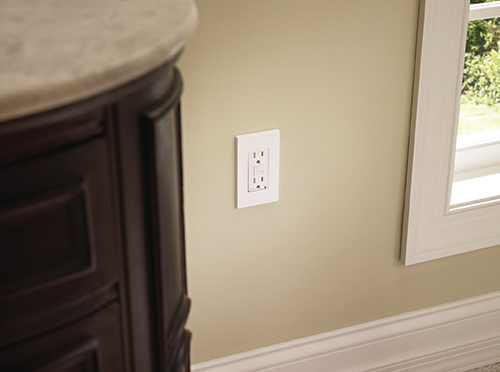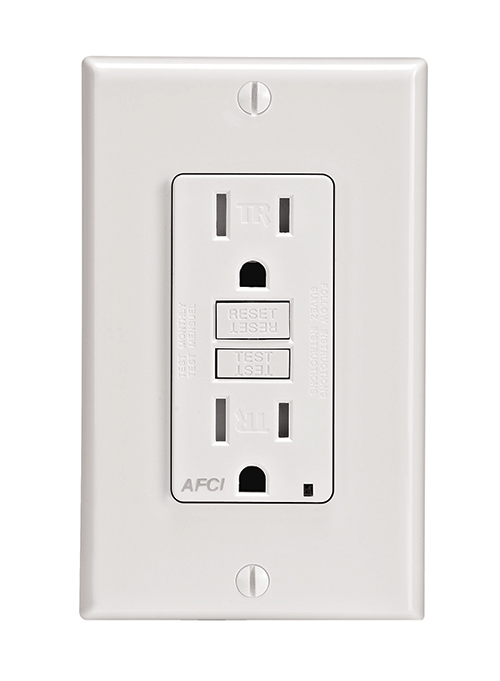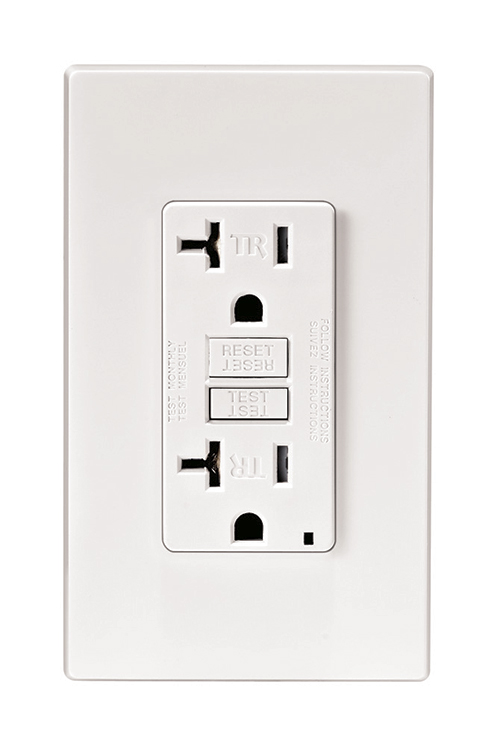
Protecting Your Home from Electrical Hazards
Tips from Home Improvement Expert Tom Kraeutler
Recognizing safety measures in your home
What comes to mind when considering safety hazards around the home? Do you think of electrical safety, fire prevention and reducing the risk of electrical shock? Often times, our quest for new kitchen cabinets and hardwood floors takes priority, while the projects to increase home safety are put on the back burner. One project, however, that should not be put off is evaluating the electrical safety of your home.
\”There is no time like the present to take a good look around your home and make the simple, yet necessary changes to eliminate electrical hazards and create an added layer of protection for your home and family,\” said Tom Kraeutler, home improvement expert and syndicated radio show host of The Money Pit.
Kraeutler notes a good start is to take inventory of the outlets around your home. Take notice of any outlets that could benefit from being replaced by an Arc Fault Circuit Interrupter (AFCI), Ground Fault Circuit Interrupters (GFCI) or tamper-resistant outlet.
AFCI versus GFCI
AFCIs and GFCIs sound similar, but what do they mean? While AFCIs provide protection from arc-faults that may lead to electrical fires, GFCIs help protect homeowners from electrical shock due to ground faults.
Arc-fault protection is extremely important as arc-faults are often unseen and can occur anywhere in the home\’s electrical system, including within walls as well as appliance cords. AFCI receptacles are relatively new to the market and detect arcing electrical faults to help reduce the likelihood of the electrical system being an ignition source of a fire. They are perfect for a remodeling project or new home construction as the latest National Electrical Code(r) requires AFCI protection in a growing number of locations throughout the home.
GFCIs on the other hand are designed to reduce the occurrences of shock or electrocution due to ground faults. Many homeowners are familiar with GFCI devices as they are proven safety products that have saved many lives since their introduction to the market.



Install AFCI receptacles in family rooms, dining rooms, living rooms, parlors, libraries, dens, bedrooms, sunrooms, recreation rooms, closets, hallways or similar rooms or areas.

Use GFCI receptacles anywhere water may be present, such as kitchens, bathrooms, garages, basements, porches, pool areas and laundry rooms.
Whole house safety
Did you know the Electrical Safety Foundation International reports home electrical fires account for an estimated 51,000 fires each year, resulting in nearly 500 deaths, more than 1,400 injuries and $1.3 billion in property damage? Just as alarming, the Foundation reports that nearly seven children are treated daily in hospital emergency rooms for electrical shock or burn injuries caused by tampering with a wall outlet.
Recent technological advances in the AFCI, GFCI and tamper-resistant outlet market have made achieving whole home electrical protection simpler than ever. This is due to the creation of devices capable of providing necessary protection, as well as cost-effective and easier to install options.
\”AFCI protection was once only available through the home\’s circuit breaker,\” Kraeutler explained. \”Now, AFCI receptacles are available for a safe alternative for added home protection.\”
In addition, GFCI options are available in slim design for added space in an electrical box to make installation simpler. They also offer a tamper resistant design for increased safety by blocking access to the contacts by most foreign objects, thereby reducing shock and electrocution incidents.
Take proactive steps to update your home\’s electrical devices using the following tips:
Tips to protect your home from electrical hazards
- Keep an eye out for electrical wiring damaged during installation or afterwards through over-stapling; crushing; bending; penetration by screws and nails; and through rodent or insect damage.
- Over time, cabling may also degrade further due to exposure to elevated temperatures or humidity, eventually leading to arcing faults and potentially a fire.
- Install AFCI receptacles in family rooms, dining rooms, living rooms, parlors, libraries, dens, bedrooms, sunrooms, recreation rooms, closets, hallways or similar rooms or areas.
- Use GFCI receptacles anywhere water may be present, such as kitchens, bathrooms, garages, basements, porches, pool areas and laundry rooms.
- For added convenience, try a self-test GFCI that automatically tests itself to confirm that protected power is available.
- Consider replacing standard outlets with tamper-resistant outlets which employ an automatic shutter mechanism designed to protect children attempting to insert foreign objects.
- One company, Leviton, offers the industry\’s first AFCI receptacle, slim GFCI receptacles for easier installation and a wide variety of combination tamper-resistant outlet devices. Visit your local or online retailer for more product details.
- Check out online resources and videos at www.learnitatleviton.com for do-it-yourself installations of AFCI, GFCI and tamper-resistant outlets in your home.
Source:
Leviton

